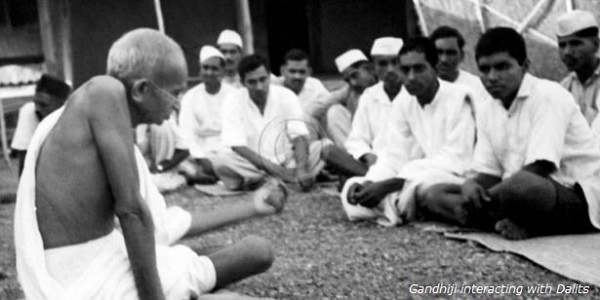
- Modern Indian History - Home
- Decline of Mughal Empire
- Bahadur Shah I
- Jahandar Shah
- Farrukh Siyar
- Muhammad Shah
- Nadir Shah’s Outbreak
- Ahmed Shah Abdali
- Causes of Decline of Mughal Empire
- South Indian States in 18th Century
- North Indian States in 18th Century
- Maratha Power
- Economic Conditions in 18th Century
- Social Conditions in 18th Century
- Status of Women
- Arts and Paintings
- Social Life
- The Beginnings of European Trade
- The Portuguese
- The Dutch
- The English
- East India Company (1600-1744)
- Internal Organization of Company
- Anglo-French Struggle in South India
- The British Conquest of India
- Mysore Conquest
- Lord Wellesley (1798-1805)
- Lord Hastings
- Consolidation of British Power
- Lord Dalhousie (1848-1856)
- British Administrative Policy
- British Economic Policies
- Transport and Communication
- Land Revenue Policy
- Administrative Structure
- Judicial Organization
- Social and cultural Policy
- Social and Cultural Awakening
- The Revolt of 1857
- Major Causes of 1857 Revolt
- Diffusion of 1857 Revolt
- Centers of 1857 Revolt
- Outcome of 1857 Revolt
- Criticism of 1857 Revolt
- Administrative Changes After 1858
- Provincial Administration
- Local Bodies
- Change in Army
- Public Service
- Relations with Princely States
- Administrative Policies
- Extreme Backward Social Services
- India & Her Neighbors
- Relation with Nepal
- Relation with Burma
- Relation with Afghanistan
- Relation with Tibet
- Relation with Sikkim
- Relation with Bhutan
- Economic Impact of British Rule
- Nationalist Movement (1858-1905)
- Predecessors of INC
- Indian National Congress
- INC & Reforms
- Religious & Social Reforms
- Religious Reformers
- Women’s Emancipation
- Struggle Against Caste
- Nationalist Movement (1905-1918)
- Partition of Bengal
- Indian National Congress (1905-1914)
- Muslim & Growth Communalism
- Home Rule Leagues
- Struggle for Swaraj
- Gandhi Assumes Leadership
- Jallianwalla Bagh Massacre
- Khilafat & Non-Cooperation
- Second Non-Cooperation Movement
- Civil Disobedience Movement II
- Government of India Act (1935)
- Growth of Socialist Ideas
- National Movement World War II
- Post-War Struggle
- Clement Attlee’s Declaration
- Reference & Disclaimer
Struggle Against Caste
The Hindus were divided into numerous castes (jath). The caste, into which a person was born, determined large areas of his/her life.
The caste system determined whom he/she would marry and with whom he/she would didnt.
Caste largely determined ones profession and his social loyalties. The castes were carefully graded into a hierarchy of status.
At the bottom of the ranking, scheduled castes (or untouchables caste) came, they constituted about 20 per cent of the Hindu population.
The untouchables suffered from numerous and severe disabilities and restrictions, which of course varied from place to place. Their touch was considered impure and was a source of pollution.
In some parts of the country, particularly in the South, their shadow was avoided, so that they had to move away if a Brahmin was seen or heard coming.
The scheduled caste could not enter the Hindu temples or study the shartras.
Often scheduled castes children could not attend a school in which children of upper caste (of Hindus) studied.
Public services such as the police and other were closed for them.
The untouchables were forced to take up menial and other such jobs which were considered as 'unclean,' for example, scavenging, shoe-making, removing dead bodies, skinning dead animals, tanning hides and skins, etc.
The caste system was an evil in modern times, it became a major obstacle in the growth of a united national feeling and the spread of democracy.
The introduction of modern industries, railways, and buses and growing urbanization made it difficult to prevent mass contact among persons of different castes, especially in the cities.
Modern commerce and industry opened new fields of economic activity to all.
Modern democratic and rationalist ideas spread among Indians and they raised their voice against the caste system.
The Brahma Samaj, the Prarthana Samaj, the Arya Samaj, the Ramakrishna Mission, the Theosophists, the Social Conference, and nearly all the great reforms of the 19th century attacked on the caste system.
The growth of the national movement played a significant role in waning the caste system. The national movement was opposed to all institutions which tended to divide Indian people.
All his life, Gandhi ji kept the abolition of untouchability in the front of his public activities.

Dr. B. R. Ambedkar, who belonged to one of the scheduled castes, devoted his entire life to fighting against caste tyranny.
Ambedkar organized the All India Depressed Classes Federation for the purpose.
In South India, the non-Brahmins organized during the 1920s the SelfRespect Movement to fight the disabilities, which Brahmins had opposed.
The Constitution of Independent India has provided the legal framework for the final abolition of untouchability. It has declared that untouchability is abolished and its practice in any form is forbidden and punishable.